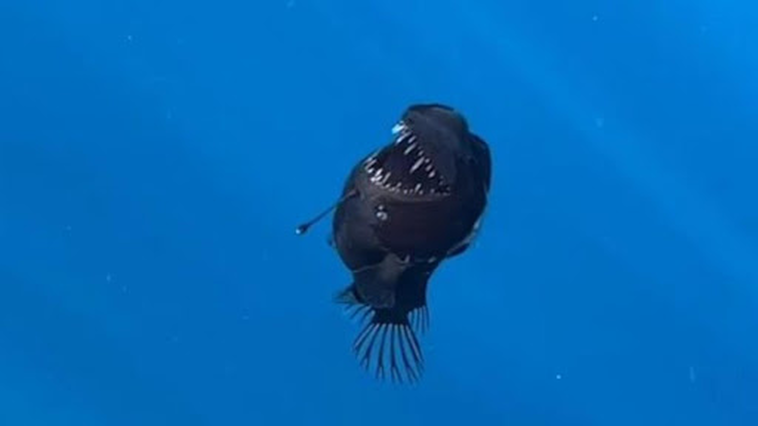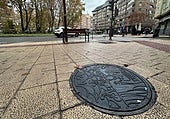
Unusual Sighting in the Canary Islands: A Black Devil on the Surface in Broad Daylight
This is a predatory fish, with a striking appearance, that inhabits the depths of tropical and subtropical seas, between 200 and 2,000 meters deep.
Friday, 7 February 2025, 16:20
Scientists are once again turning their attention to the Canary Islands, specifically its waters. Just two kilometres off the coast of Tenerife, a black devil, also known as an adult abyssal anglerfish (Melanocetus johnsonii), emerged from the abyssal depths in vertical swimming. This could be the first sighting of a live specimen of this species, in broad daylight and on the surface.
This revelation was made on Instagram by Condrik Tenerife, an NGO dedicated to research, conservation, and dissemination about sharks and rays on the island.
Marine biologist Laia Valor spotted the fish on January 26th, during a pelagic shark research project. "We saw it as we were returning to port. We passed by it and I saw something black that didn't look like plastic or anything familiar, it seemed strange. After seeing it, we spent a couple of hours with it. It was damaged and not in good condition, it only survived for a few hours," Valor confessed in an interview with Efe.
According to Condrik, the black devil is a predator with a striking appearance—'Melanocetus' literally means 'black sea monster'—that inhabits the sea floor, between 200 and 2,000 meters deep.
This is a legendary fish that "few people will have had the privilege of observing alive," according to the NGO, as previously only larvae and dead adult specimens had been detected on the surface.
"We are not entirely sure, but it is not normal. It is a very punctual and sporadic sighting. We cannot say it never happens, although if it occurred on a larger scale, these sightings would happen more often, but we can say it might be the first time it has been recorded like this," the biologist specified.
The team collected the fish's body, once dead, and transported it in a water raft to the Museum of Nature and Archaeology (Muna) in Santa Cruz de Tenerife.
More information about the black devil
This animal "uses its dorsal appendage filled with bioluminescent symbiotic bacteria as bait to attract its prey," much like in the film 'Finding Nemo'. It inhabits tropical and subtropical seas worldwide and was first cited in another Macaronesian territory: Madeira.
The reason for its presence on the surface is unknown, although it is believed to be due to illness, an upward current, or fleeing from a predator. "There could be thousands," Valor summarised.




